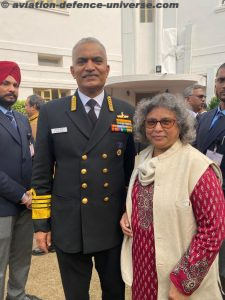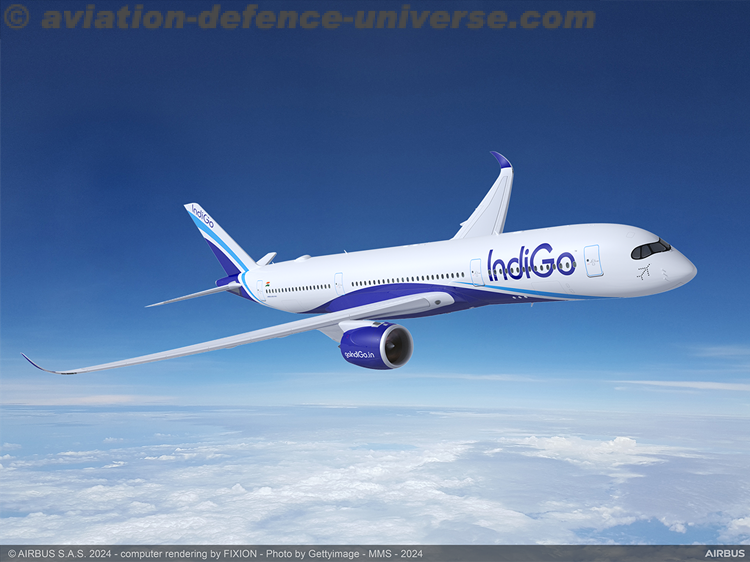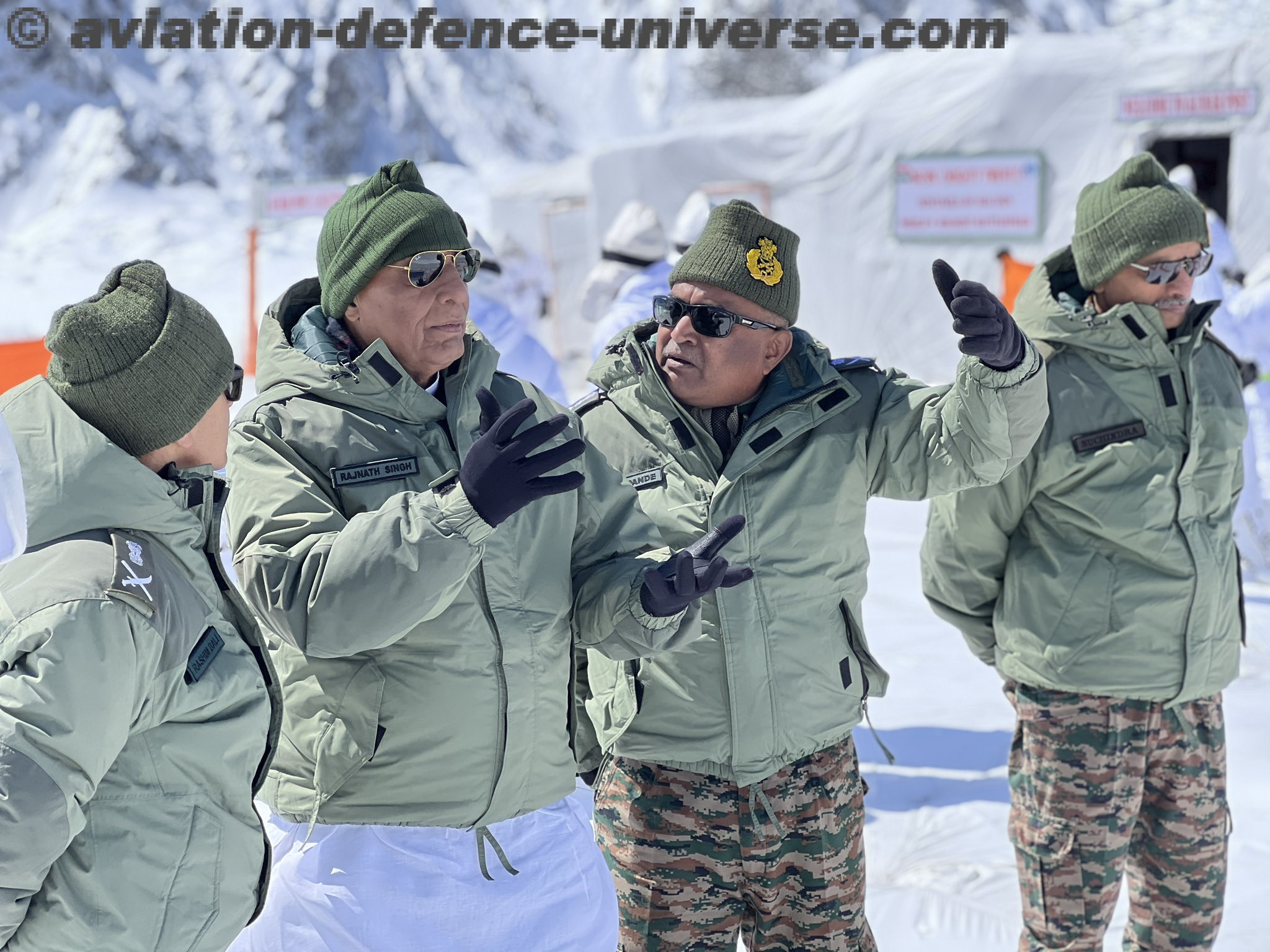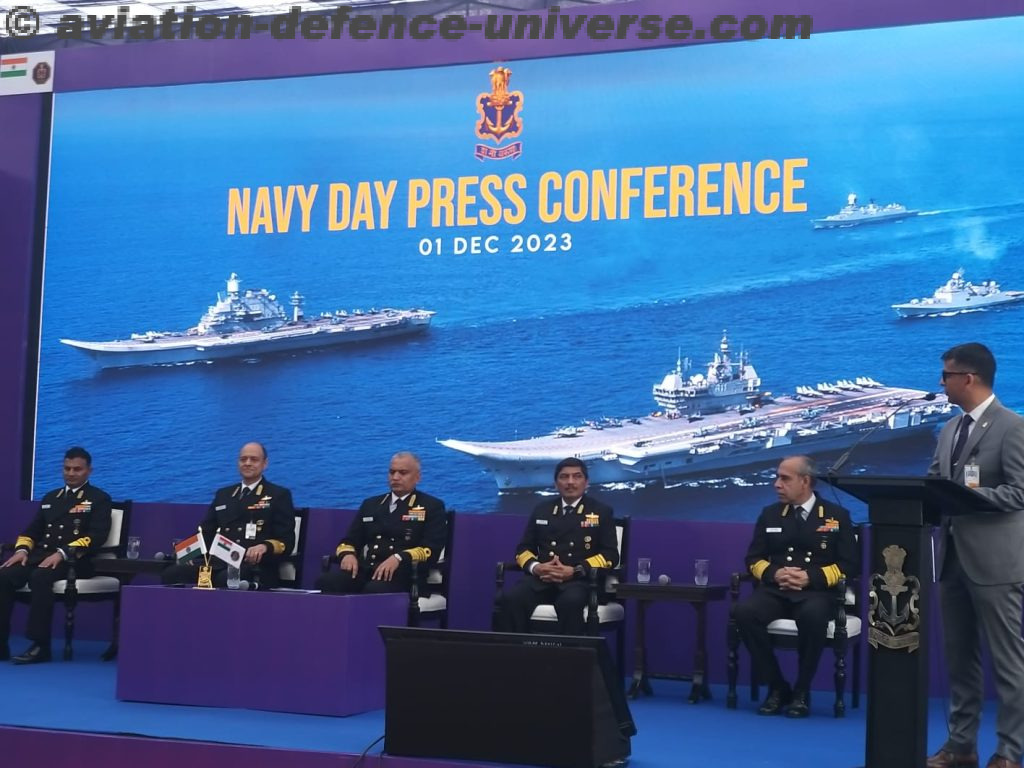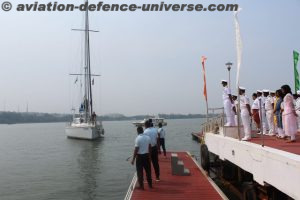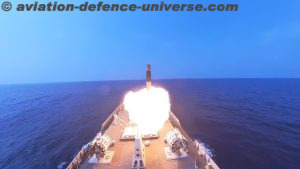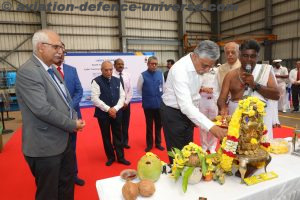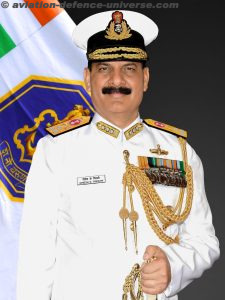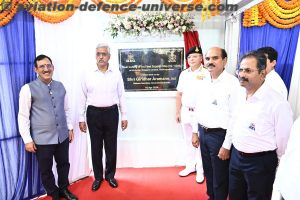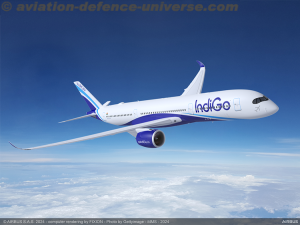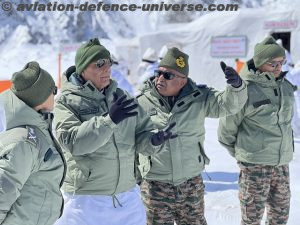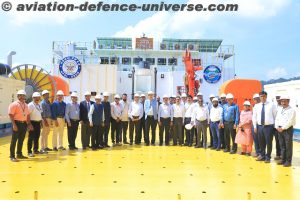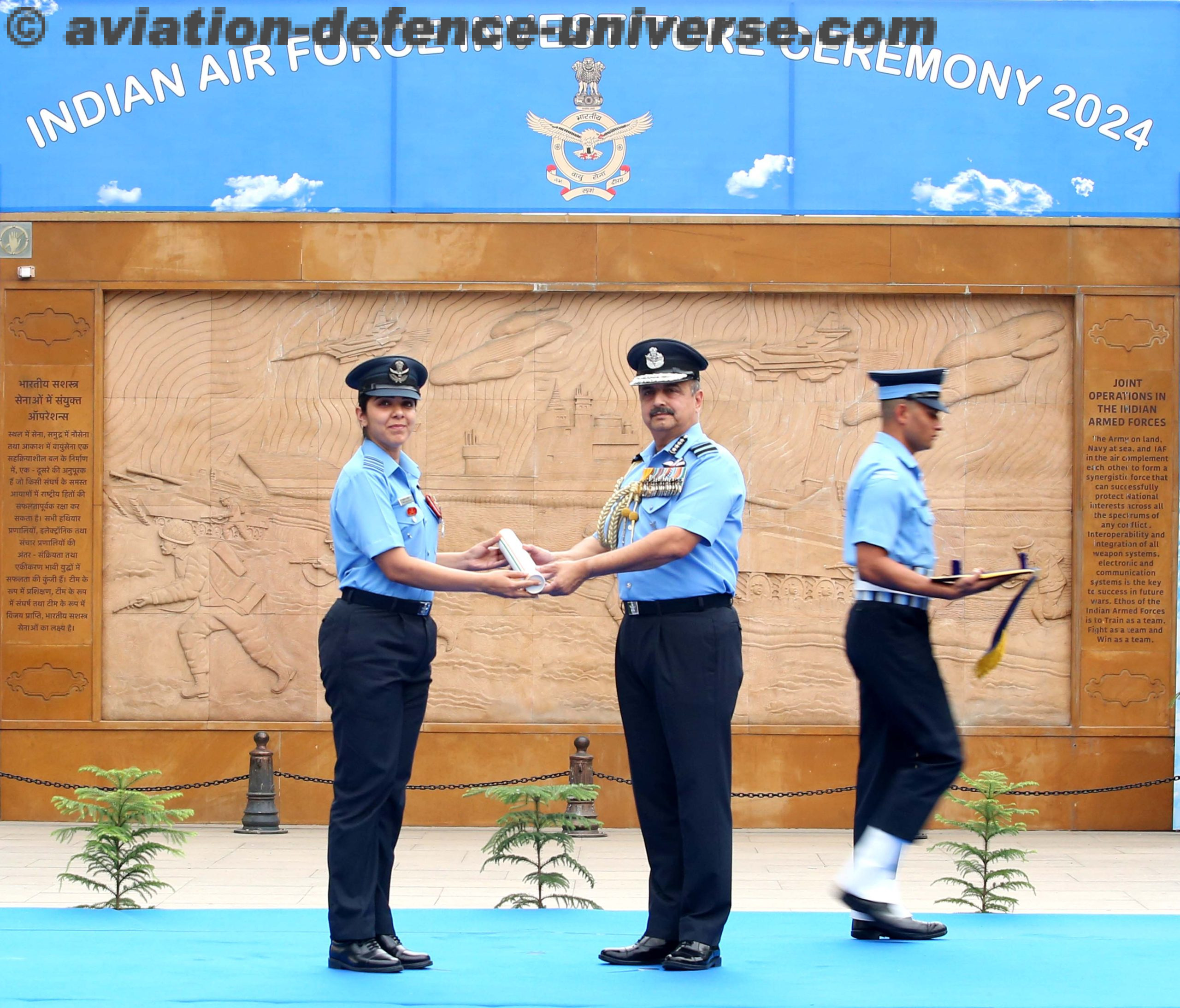By Sangeeta Saxena
New Delhi. 01 December 2023. It was a Navy day Press Conference with a difference. Indian Navy Chief Admiral R Hari Kumar gave a short welcome address, releases the naval history comic books along with Amar Chitra Katha in 10 regional languages, launches the Integrated Logistics Management System portal, in continuation launched the Revitalised CNS Discussion Forum and also the INGRAMS which is the Indian Naval Grievance Redressal And Monitoring System. And finally gave his annual media address after a presentation on the status of Indian Navy.
The very much in command Indian Navy Chief Admiral R. Hari Kumar stated, “We are looking at 170-175 ships by 2035. Currently, 67 ships are under construction of which 65 are in Indian shipyards.” Assisted by his Vice Chief Admiral Sanjay Jasjit Singh, the Chief cleared that the new destroyers are on the drawing board and it may take another five years before the steel-cutting begins. “Once the yards start building the warships, it may take five-ten years to deliver these weapons to the Navy as the capability of Indian shipyards have improved,” informed the Vice Chief.
Mission readiness has always been the strength of Indian Navy and the Chief reiterated this. “Our ships, submarines, and aircraft have sustained a high operational tempo, undertaking missions and tasks encompassing military, diplomatic, constabulary and benign roles. Our units are mission-deployed across the Indian Ocean Region and beyond, to protect and promote our national interests.”
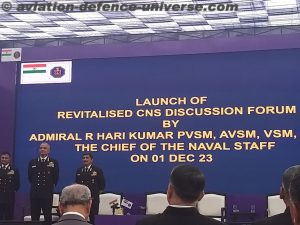 Stressing on the perfectly completed roles and responsibilities undertaken by the force the Admiral informed, “Indian units are mission-deployed across the Indian Ocean region and beyond, to protect and promote the national interest, so these extensive deployments, coupled with the equally large number of exercises at sea, have really helped the Indian Navy and, as a result, the Indian Navy has remained a combat-ready, credible, cohesive, and future-proof force, enabled by what we call our ship’s first outlook, where every single action that we take is aimed to enable our women and men in the operational units to perform that duty very well.”
Stressing on the perfectly completed roles and responsibilities undertaken by the force the Admiral informed, “Indian units are mission-deployed across the Indian Ocean region and beyond, to protect and promote the national interest, so these extensive deployments, coupled with the equally large number of exercises at sea, have really helped the Indian Navy and, as a result, the Indian Navy has remained a combat-ready, credible, cohesive, and future-proof force, enabled by what we call our ship’s first outlook, where every single action that we take is aimed to enable our women and men in the operational units to perform that duty very well.”
“Have a look at the year gone by, and you would agree that 2023 has been a remarkable year for our nation. We have left a mark across various sectors and spheres, be it the economic front, diplomacy, or the sports arena. Similarly, for the navy too, the last year has been remarkable. In this period, our ships, submarines and aircraft have sustained a high operation tempo, undertaking missions and tasks encompassing military, diplomatic and constabulary roles,” he added.
The CNS stated that among the operational achievements of the Indian Navy, nothing could be more reassuring than the maiden take-off of LCA Navy and the MiG29K onboard Vikrant in February this year which reaffirms that the Indian Navy is on the right track in fostering ‘Aatma Nirbharta’ in the defence sector. He extended this emotion to the fact that in driving self-reliance and technology development, the Indian Navy is well established on a path of budget optimisation, with the capital budget crossing the Rs 50,000 core mark, a 26 per cent hike in the revenue budget.
The news of the day was that Navy has appointed its first woman commanding officer on a naval ship. He informed, “We also appointed the first woman commanding officer of an Indian naval ship. It has been our effort to constantly challenge the status quo to ensure that the navy remains on an aspirational and dynamic trajectory in the future.”
“Our first batch of Agniveers graduated from the premier-winning establishment, INS Chilka, in March this year. And importantly, this batch of Agniveers includes 272 female Agniveer trainees as well. Going further, the second batch of Agniveers had a total of 454 women and I want to say that with the third batch, which has just been inducted, we have now crossed over 1,000 women affiliates in the Navy,” he added.
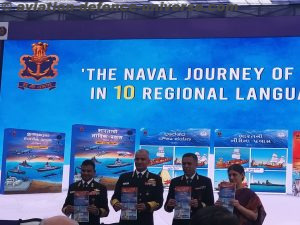 The Admiral stressed that these statistics stand testament to the Navy’s philosophy of all roles and all ranks with regard to the deployment of women in the service, both for officers and for personnel below the rank of officer.
The Admiral stressed that these statistics stand testament to the Navy’s philosophy of all roles and all ranks with regard to the deployment of women in the service, both for officers and for personnel below the rank of officer.
Responding to a question the Admiral stated that the government is making extensive efforts to repatriate eight former naval personnel from Qatar, who were handed death sentences by a Qatari court and there is total support and effort being put in by the government who is working closely with the agencies concerned to ensure that interests of the veterans are looked after. “The ex-naval officers in Qatar are veterans…and we are interested in ensuring their welfare is taken care of. I want to reassure you that the Indian government is putting all-out efforts to ensure that they are brought back,” he said.
On a question on China, he said, “We are not in dialogue with China but we are engaging with friendly countries in our region. We are in dialogue with them, we interact with them, we train with them.. we are engaging in capacity building, all working towards developing trust for security point of view and also in times of distress.” Talking on matching capacity he stated that Indian Navy is hoping to up its fleet strength to 170 by 2030 to 2035. China outnumbered United States in 2020 to possess the world’s largest naval fleet of about 340 ships, as per the Pentagon’s 2022 China Military Power Report, and is expected to add another 50 over next two years, infusing more stealth to its military power. Not just that, China is helping Pakistan to expand the adversary neighbour’s navy.
He reassured the nation that India is a resident naval power in the Indian Ocean despite China may have legitimate reasons to in the Indian Ocean Region. “We try to keep the extra regional forces that are present in the region under surveillance and keep a watch on their activities–what are they engaged in, what are their intentions and so on. So, that is why we deploy our surveillance assets–ships, submarines, aircraft, UAVs and others. So they’re deployed regularly to keep our area of interest and observation,” he said.
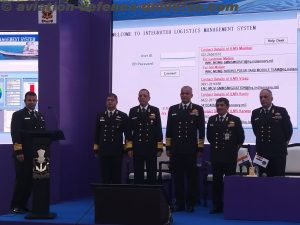 He stated, “ the sheer footprint of Navy’s deployments has been satisfying. Our ships have been persistently present across the Indo Pacific, submarines have undertaken OTRs at foreign ports in Oman, Australia and Indonesia, and our MR aircraft have operated from equally distant airfields at Mauritius, Seychelles, Darwin and Coco Keeling. In our Theatre Level Operational Readiness Exercise; in the months of January and February 23, more than 151 operational units took part in the exercise that spanned an area of 21 million square nautical miles! We also conducted ‘Twin Carrier Operations; off Goa that involved both our aircraft carries, Vikrant and Vikramaditya,” the Navy chief informed.
He stated, “ the sheer footprint of Navy’s deployments has been satisfying. Our ships have been persistently present across the Indo Pacific, submarines have undertaken OTRs at foreign ports in Oman, Australia and Indonesia, and our MR aircraft have operated from equally distant airfields at Mauritius, Seychelles, Darwin and Coco Keeling. In our Theatre Level Operational Readiness Exercise; in the months of January and February 23, more than 151 operational units took part in the exercise that spanned an area of 21 million square nautical miles! We also conducted ‘Twin Carrier Operations; off Goa that involved both our aircraft carries, Vikrant and Vikramaditya,” the Navy chief informed.
Being questioned on Maldives President’s recent statement on asking India to scale down Indian military personnel presence from the island nation which now has a pro-China government, Admiral answered, “as far as scaling down of personnel is concerned, it is a decision of the government. Whatever instructions are given to us, we will follow.”
He also stated that Maldives is among the key maritime neighbours of India in the Indian Ocean Region (IOR) and India has been seeking to expand ties with the island nation — including in areas of defence and security — amid China’s efforts to expand its influence in the region. In May, both countries had launched the construction of a harbour for the Coast Guard of the Maldives National Defence Force (MNDF).
It may be recalled that Maldives President Dr Mohamed Muizzu had formally sought withdrawal of Indian military personnel from Maldives during a meeting with Minister of Earth Sciences Kiren Rijiju.
To a question on recent controversies on India-US ties, Admiral Kumar answered that India has a long-standing partnership with the US and both countries have participated in a range of exercises, including Malabar, which began in 1993 and over the years have turned into a complex multilateral exercise, and other defence agreements signed between the two countries. He said, “ Indian Navy and the US Navy have reached a high level of interoperability in joint exercises involving ships, submarines, aircraft and aircraft carriers. In the last year, both sides have signed an agreement to develop underwater domain awareness and there is also enhanced cooperation between the two sides on technology. ”
On the HR front has initiated a ‘360-degree’ feedback system in appraisals which is followed by civil services to assess performance of the bureaucracy. In contrast to the existing linear reporting format, in which only the superiors can comment upon their sub-ordinates, the 360-degree feedback mandates the juniors to assess their seniors as well.
The interaction overall must have been the longest ever between the media and a serving naval chief but left a lot of food for thought.
